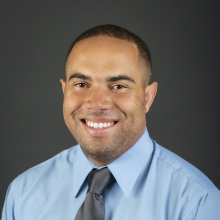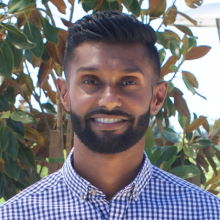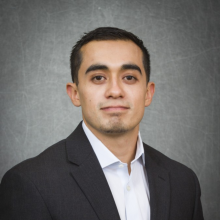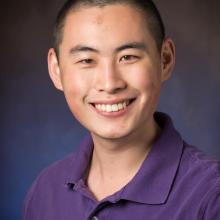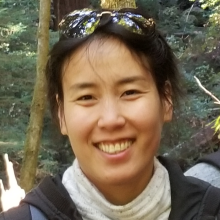The Wu Tsai Neurosciences Institute is proud to welcome its eighth cohort of interdisciplinary postdoctoral scholars, comprising six young scientists with backgrounds in computer science, psychology, education, engineering and pharmacology.
The institute’s Interdisciplinary Scholar Awards support innovative, collaborative and creative postdoctoral researchers from across Stanford who are pursuing novel, multi-disciplinary approaches to understanding the workings of the mind and brain. In addition to receiving research funding, scholars meet regularly for workshops, journal clubs and other activities that allow them to learn from one another’s varied research and personal backgrounds and establish community and collaborations.
“Our scholars are all remarkable scientists with exciting interdisciplinary research plans, but they are also selected for their potential to form a diverse and supportive intellectual community,” said Miriam B. Goodman, the Mrs. George A. Winzer Professor of Cell Biology and chair in the Department of Molecular and Cellular Physiology, who founded the Interdisciplinary Scholars Program in 2015. “Our program fulfills an important need for postdocs, who often feel isolated, and it’s been gratifying to see similar cohort-based programs crop up across campus in recent years.”
The institute's newest scholars join 35 previous fellowship recipients including alumni who have made important advances in the neurosciences and gone on to careers in academia, industry, nonprofit and government organizations.
“I’ve been fortunate to have several interdisciplinary scholars in my lab over the years, and have seen how they have learned from one another and generated new research directions from that exposure,” said Liqun Luo, the Ann and Bill Swindells Professor in the Department of Biology, who joined Goodman as co-director of the program earlier this year. “I’m very excited about this year’s cohort of scholars and can’t wait to see what they accomplish.”
Learn more about the 2022 Wu Tsai Neuro Interdisciplinary Scholars:
Logan Cross
Advisors
Daniel Yamins (Wu Tsai Neuro Institute Scholar, Psychology, Computer Science)
Co-sponsor: Nicholas Haber (Education)
Cross's research in the Yamins lab combines interdisciplinary approaches to understand how intelligence emerges in humans and machines. In collaboration with Nicholas Haber of the School of Education, he is exploring how the curiosity-driven learning that underpins human intelligence can be characterized in computational terms and built into artificial intelligence agents. Cross completed his doctoral work in computation and neural systems at the California Institute of Technology, where he used cutting-edge neuroimaging and machine learning methods to study how the human brain makes decisions in high-dimensional naturalistic settings.
Darrel Deo
Advisors
Jaimie Henderson (Neurosurgery)
Co-sponsor: Krishna Shenoy (Electrical engineering)
Deo is a neural engineer in Stanford’s Neural Prosthetics Translational Laboratory, where he is developing prosthetic devices that can interface with the brain to help restore movement and communication to people with paralysis. Previously, he completed masters and doctoral degrees in mechanical engineering with Allison Okamura, co-advised by Krishna Shenoy and Jaimie Henderson of the Neural Prosthetics Translational Laboratory.
Elizabeth DuPre
Advisors
Russell Poldrack (Psychology)
Co-sponsor: Scott Linderman (Wu Tsai Neuro Institute Scholar, Statistics)
DuPre is a psychologist and computational neuroscientist in the Poldrack lab developing methods to characterize complex, naturalistic cognition in health and disease. She is working to model individual brain activity across a range of cognitive states and to assess the generalizability of these individualized models by extending statistical methods for human neuroimaging data analysis in collaboration with Scott Linderman. DuPre completed her doctoral work in neuroscience at McGill University, where she focused on benchmarking emerging methods to compare functional activations during complex cognitive tasks. She is actively involved in the open source ecosystem with a focus on improving the reproducibility of analysis workflows.
Christopher Miranda
Advisors
Mark Schnitzer (Biology, Applied Physics)
Co-sponsor: Ivan Soltesz (Neurosurgery)
Miranda aims to unravel long-standing mysteries of the basal ganglia by developing novel optical imaging technologies to probe the behavior of neurons in the mouse brain. Miranda completed his doctoral work at Arizona State University, where he focused on creating new imaging technologies for biomedicine based on the photoacoustic effect (ultrasound generation through optical absorption). He was inspired to shift the direction of his research towards neuroscience after attending a specialized NIH BRAIN Initiative training program, and joined the Schnitzer lab as a postdoc because of its reputation as one of the premier research labs for training neuro-engineers to make a tangible impact in neuroscience.
Zihao Ou
Advisors
Guosong Hong (Wu Tsai Neuro Institute Scholar, Materials Science and Engineering)
Co-sponsor: Julia Kaltschmidt (Wu Tsai Neuro Institute Scholar, Neurosurgery)
A materials scientist with a physicist’s mindset, Ou's work in the Hong lab focuses on developing innovative neuroscience technologies based on light’s interactions with nanomaterials and biological tissues. A new collaboration with Julia Kaltschmidt aims to use nanoparticle-based internal light sources to enable in vivo optogenetic screening of the gut-brain signalling axis. This platform can be broadly applied to the peripheral nervous system, and offers a generalizable method for biomedical applications that need a light source deep inside the body. Ou completed his doctoral work in materials science at the University of Illinois at Urbana-Champaign, where he focused on studying the dynamic self-assembly of nanoparticles using liquid-phase transmission electron microscopy.
Mengyuan Xu
Advisors
Merritt Maduke (Molecular and Cellular Physiology)
Co-sponsor: Wah Chiu (Bioengineering, Microbiology and Immunology)
Xu's research in the Maduke lab focuses on determining the structures of chloride channel (CLC) family proteins to further understand their transport mechanisms. She is collaborating with Stanford cryo-EM pioneer Wah Chiu to understand the structure of the CLC-2 channel, which is critical for electrogenesis, cell volume homeostasis and control of membrane potential in the brain, helping to maintain the chloride gradient favorable to cell hyperpolarization for GABA currents and may also directly influence neuronal excitability. High-resolution structures of CLC-2 will provide fundamental knowledge of the molecular basis for these functions and guide the design of small molecules that can be used for research or therapeutics. Xu completed her doctoral work in pharmacology at Case Western Reserve University, where she focused on understanding the complex function of telomere binding proteins POT1-TPP1 in telomere maintenance and telomerase regulation.
Learn more about the next generation of neuroscience in our new series of profiles of scholars past and present.

